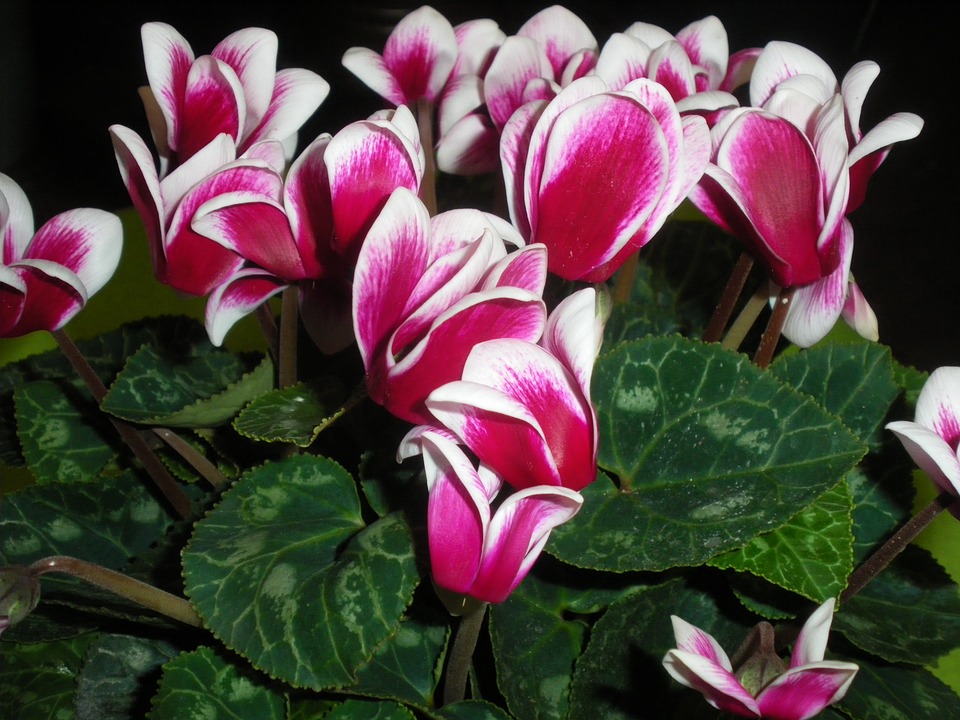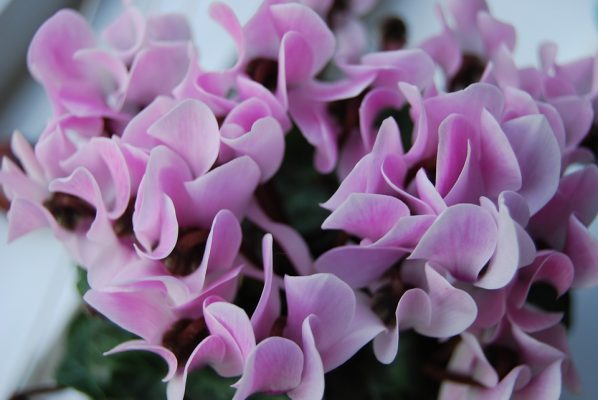Plant Care
Cyclamen Care
Cyclamen bloom during coolers months, making them a popular winter houseplant. The plants will go dormant in summer, unless your home is kept cool.
Light – Bright, indirect sunlight is preferred while Cyclamen are actively growing. If the plant goes dormant, it can be moved into a lower light environment until temperatures begin to cool.
Water – Water once the top third of the soil is dry, but be careful to not get water on the leaves as it can lead to fungal issues and leaf decline. The easiest method is to water from the bottom by setting a pot with bottom drainage into a saucer of water for 15 to 20 minutes. Make sure to dispose of the excess water after the time has passed. If watering from the bottom is not possible, pushing the spout of your watering can directly into the soil is an easy way to prevent splashing.
Soil – Well-draining, all-purpose potting soils, like Espoma Potting Soil, work best.
Temperature – During the day, Cyclamen enjoy temperatures between 60 ° and 70° and cooler temperatures at night, between 40° and 55°. If temperatures climb too high, the plant will go dormant.
Humidity – Cyclamen prefer high levels of humidity. A nearby humidifier, a brightly lit bathroom or a tray of pebbles and water are easy ways to raise the humidity. Avoid misting to prevent fungal disease on the leaves.
Fertilization – Fertilize every 2 to 4 works with a diluted houseplant fertilizer, like Bonide Liquid Houseplant Food. There is no need to fertilize once the plant goes dormant.
Size – Cyclamen can reach 6 to 10 inches tall and wide at maturity.
Repotting – Repot every 2 to 3 years. Select a container with good drainage and no more than 1 size larger than its current container.
Propagation – Cyclamen propagate very easily by dividing the plants when repotting.
Deadheading – Remove spent flowers by pinching their stems back to the base of the plant. This will encourage new blooms.
Toxicity – Moderately toxic to people and pets if ingested.



